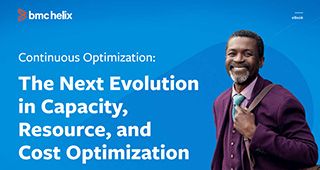Most Data Center managers are heavy on responsibilities but light on personnel. IT organizations naturally spend more on programming talent (because it helps the bottom line) than they do on Data Center staff (which is frequently viewed as overhead). Of course, this spending mismatch doesn’t detract from the fact that Data Center responsibilities get heavier each year and everything grinds to a halt when the Data Center crashes.
Given these staffing issues, what can Data Center managers do in an under-staffed and over-worked environment? They can tool up with Data Center management and automation tools. Good Data Center managers can compensate for lack of personnel and do more work with less staff by using several different software tools.
Table 1 shows a number of everyday Data Center management functions that can be automated through single- and multi-function automation tools.
(This article is part of our Data Center Operations Guide. Use the right-hand menu to navigate.)
Table 1: Common Data Center functions that can be automated with tools software
| Data Center Management function | Purpose |
|---|---|
| Backup | Automatically backup servers and data on a scheduled basis |
| Compliance | Define and apply role-based access policies for internal and external regulatory requirements, such as Sarbanes-Oxley (SOX), Payment Card Industry Data Security Standard (PCI DSS), and the Health Insurance Portability and Accountability Act of 1996 (HIPAA) |
| Configuration/Provisioning |
|
| Discovery | Determine and document what’s running on your network |
| Help Desk |
|
| Monitoring |
|
| Patching | Automatically download and deliver server updates and hotfixes to client machines |
| Provisioning | Make additional hardware and capacity available, including network hardware, storage, new virtual machines, and telecommunications provisioning |
| Remediation | After detecting an issue, run a designated script, program, service, or task to fix the problem |
| Scheduling | Kick off scheduled repetitive IT maintenance tasks or processes to run on your servers or on your network |
| Service desk | Offer a catalogue of IT services that users can request and obtain provisioning for, using an Information Technology Service Management (ITSM) framework |
| Threat management |
|
Many but not all of the functions shown in Table 1 can be performed manually, but a good software package automates these functions to provide three critical benefits for a Data Center.
- Provide consistency – Once your configurations are set up correctly, an automated solution will deliver the same results each time it is run. Automation tools eliminate manual procedures where technicians can miss a step or enter a typo.
- Leverage the effectiveness of your staff – Your technicians can spend their time on developing solutions rather than manually performing the same configurations over and over again for multiple machines, such as installing a software update on hundreds of PCs.
- Make your staff more efficient – You can do more with less. Fewer people can manage many Data Center functions through automation.
It’s also important to look at single- and multi-function Data Center automation tools. A single-function automation package will focus almost exclusively on one area. Many Microsoft products are single-function tools, such as Active Directory for user and device provisioning, Microsoft Data Protection Management for backups, Windows Software Update Services for patching, System Center Control Configuration Manager & Intune for configuration, etc.
In contrast, a multi-function Data Center automation tool automates several different functions in the same package. Here at BMC, our Blade Logic Server Automation product automates multiple Data Center server functions, including compliance, configuration, provisioning, and threat management. A service management platform like Remedy Service Management Suite covers both help desk and service desk functions. Monitoring software monitors key components as well as implements auto-remediation tasks when a component or program fails. While one package doesn’t fit all sizes, many packages can and do satisfy multiple Data Center automation needs. Be careful to pick out the packages that meet your needs.
For more information
If you’re interested in more information about Data Center automation tools, please feel free to contact us at BMC software. We provide several products dealing with Data Center management and automation, and we are experts on these subjects.







